
This is the story of Stephen South, a young British racing driver in the Seventies who seemed set for the glory that ultimately fell instead to rival Nigel Mansell.
Where one went on to become one of the nation’s most loved characters and the World Champion in 1992, the other’s career faded to a footnote in the cruellest circumstances.
This is a multi-faceted tale of struggle, success, disappointment, controversy, the continuous battle for funding and recognition and, ultimately, heartbreak.
Famously reticent even from his early schoolboy days as a British karting champion, South now talks openly about his career with first-time author Darren Banks. Many leading figures from the world of motor racing are woven into the narrative, which traces the turbulent era of the Seventies, the trials and tribulations which only strengthened South’s quiet yet indomitable resolve, and how close he got to his dream of racing in F1 after a winter of hugely promising test work with Colin Chapman’s Lotus team in 1979.
And for the first time he discusses with chilling candour the events that saw him forced to race in the North American Can-Am sportscar series instead of F1 in 1980, the horrific accident that befell him at Trois-Rivieres in Canada, his physically and emotionally painful recovery in a hospital on the other side of the world, his eventual return home and the subsequent trauma of having to deal with a career now broken and a life permanently altered.
Those key figures recall with affection – with a couple of exceptions – their experiences of working with or racing against this vastly underrated driver who, had he been dealt a better hand by fate, would surely be remembered alongside contemporaries such as Mansell and fellow World Champion Keke Rosberg as one of the leading F1 drivers of his era.
Profusely illustrated with numerous previously unseen photographs from professional archives and personal collections, THE WAY IT WAS – The story of a British racer who was too fast to be forgotten, is a gritty tale of the darker side of a sport when it fails to deliver a racer’s just deserts.
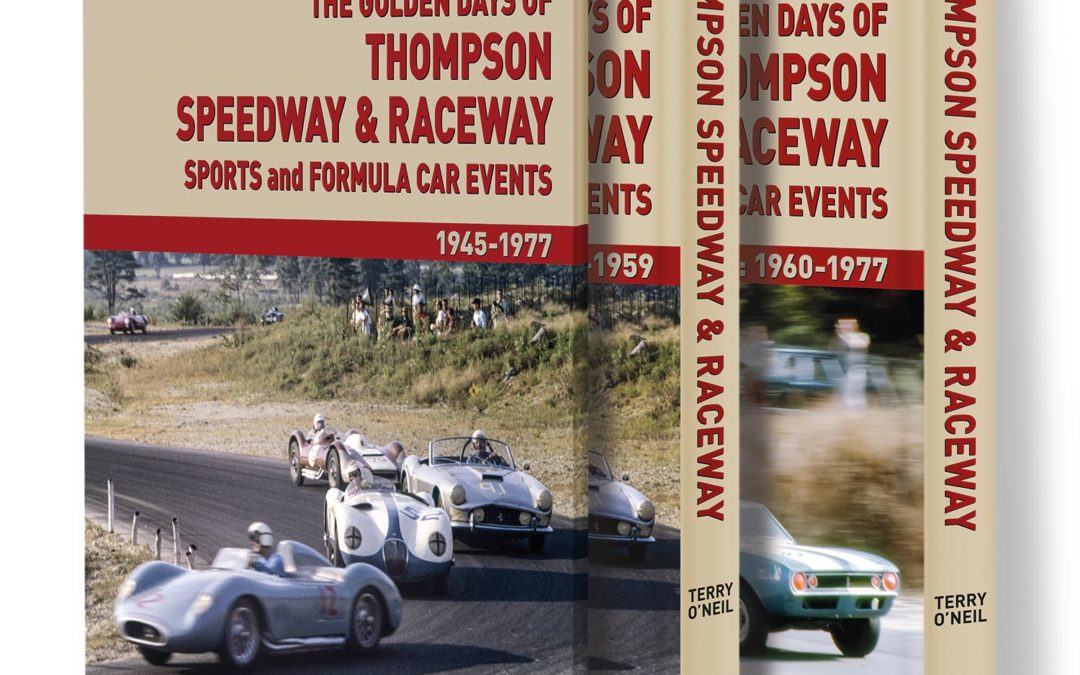
Occasionally a spark of inspiration can become the catalyst for transition. Just such an occasion took place with the construction of Thompson Speedway in 1940, a five-eighth mile banked oval track, dubbed “The Indianapolis of the East.” A road course joined to the oval in 1952 enlarged the track to form the first privately-owned complex where sports car drivers could race safely. It transformed the face of sports car racing in America, and hastened the demise of the dangerous open-road events together with the majority of flat and boring airfield race venues. This two-volume set, illustrated with many previously unseen photographs, traces the history of the raceway during its active years and describes the personalities involved in the changing fortunes of the course until its closure in 1977.
- Two-volume set with dust jacket and slipcase
- 240mm x 330mm (portrait format)
- 760 pages (VOL 1: 352 pages, VOL 2: 408 pages)
- 1200 images total
- Signed and Numbered Edition of 500 copies
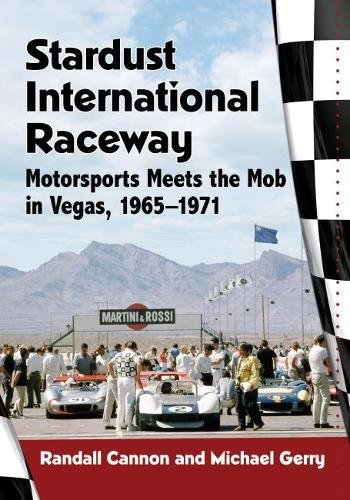
Professional motorsports found their way to Las Vegas in the mid-1950s at a bankrupt horse track swarmed by gamblers–and soon became enmeshed with the government and organized crime. By 1965, the Vegas racing game moved to Stardust International Raceway, constructed with real grandstands, sanitary facilities and air-conditioned timing towers. Stardust would host the biggest racing names of the era–Mario Andretti, Parnelli Jones, John Surtees, Bobby Unser, Dan Gurney and Don Garlits among them.
Established by a notorious racketeer, the track stood at the confluence of shadowy elements–secret wiretaps, casino skimming, Howard Hughes, and the beginnings of Watergate. The author traces the Stardust’s colorful history through the auto racing monthlies, national newspapers and the files of the FBI.

The Alaska Highway—or the Alcan—is a portal to some of the most beautiful places in North America. Tricia Brown’s best-selling guide traces this famous route, providing detailed information and tips along the way. With full-color maps and photos, this comprehensive guidebook includes details on trip preparation; considerations along the way; places to hike, bike, fish, and boat; attractions and festivals; and Alaska’s famed wildlife.
An award-winning author and former columnist and editor, Tricia Brown has spent more than twenty years traveling nearly every inch of Alaska’s road system to write about the state and its people.

When the B-52 Stratofortress entered operational service with the US Air Force in 1955, work was already underway on defining its successor. The B-70 Valkyrie, a Mach 3 jet bomber, was one option. Although two XB-70A prototypes flew, the B-70 never went into production. Out of the subsequent Advanced Manned Strategic Aircraft program came the B-1A bomber, which flew at high speed and low altitude to evade enemy air defenses. The B-1A was canceled in favor of fitting the B-52 with cruise missiles. The B-1, known as the BONE, was revived in 1981 as the improved B-1B to boost American military power and be a symbol of American strength at the peak of Cold War tensions. The B-1B entered service in 1986 with several deficiencies. The resolution of most of these issues coincided with the end of the Cold War.
After the Cold War, the B-1B lost its primary nuclear mission but remained relevant by transforming into a high-speed, long-range, high-payload delivery platform for conventional precision-guided munitions. The first combat use of the B-1B was in 1998 in Iraq. The BONE has proved a highly effective combat aircraft in Afghanistan, Iraq, Libya, Syria and the former Yugoslavia.
This superbly researched and illustrated book traces the BONE’s long development and operational history in fascinating detail.
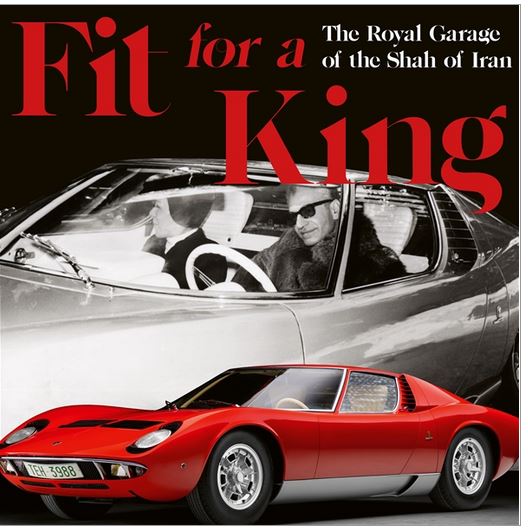
Iran has a monarchical history spanning over 2,500 years. Almost all of Iran’s Kings have had vast unchecked powers as they built, and lost, some of the largest empires in history. These vast powers led to Iran’s Kings being referred to as “Shahanshah” meaning literally the “King of Kings”.
With the advent of the automobile, Iran’s Shahanshahs procured some of the world’s most renowned automobiles for their royal garages starting from the first car to be imported to Iran, a Gardner-Serpollet 10 hp, to the famed Maserati 5000GT “Scia de Persia”, specially-ordered and owned by Iran’s last Shah, Mohammad Reza Shah Pahlavi.
In his broad spanning work, Iranian automotive historian Borzou Sepasi traces the royal garage of each Iranian Shah, starting with Mozaffar ad-Din Shah Qajar in 1900, who despite importing the first car, forbade drivers from going faster than carriages, and all the way up to the 1979 revolution. In an important postscript, the fate of many of the cars covered in the book following the end of monarchical rule in Iran, are shown.
The book also intertwines many of the historical events in Iran with the cars of the period, highlighting the special role these vehicles played. Dalton Watson is proud to present this little-known period of unique automotive history to its readers.
230mm x 280mm
-
- Hard cover with dust jacket
- 564 pages
- 1,046 photographs

Gorgeously illustrated with NASA photography, the large-format (12 × 12 inches) NASA Missions to Mars examines everything from the first tentative steps toward the fourth planet to the 2021 landing of rover Perseverance and beyond.
Space exploration has always been about pushing boundaries, but perhaps the achievement which has most piqued a sense of possibility has been the exploration of Mars. Beginning with Soviet and American flybys in the early 1960s that were part and parcel of the Space Race, acclaimed space historian Piers Bizony continues through complete coverage of the Viking 1 and 2 missions of 1975–1976. Bizony also traces NASA’s acclaimed rover program, describing the development, technologies, mission histories, and achievements of the rovers Sojourner, Opportunity, Spirit, and Curiosity—all on the 25th anniversary of their first landing.
This awe-inspiring book features:
- An engaging and complete history of Mars exploration
- A treasure trove of imagery from the NASA archives, including photos and cartography beamed home, artworks and concept drawings created during development phases, as well as photography created to document testing phases
- A glimpse of future plans for Mars exploration and habitation
- Coverage of orbiters sent to the red planet by not only NASA but by space agencies from Russia, India, Japan, Europe, China, and the UAE
- A two-sided 24-inch gatefold
Humankind’s fascination with Mars can be traced back to prewar science fiction. While the billions of dollars and ingenious innovations have allowed us incredible views from more than 51 million miles away, no less incredible are the insights these missions, hardware, and scientists have provided into our universe—and our own planet. NASA Missions to Mars is your complete illustrated history of those efforts and a necessary volume for the bookshelf of any space enthusiast!
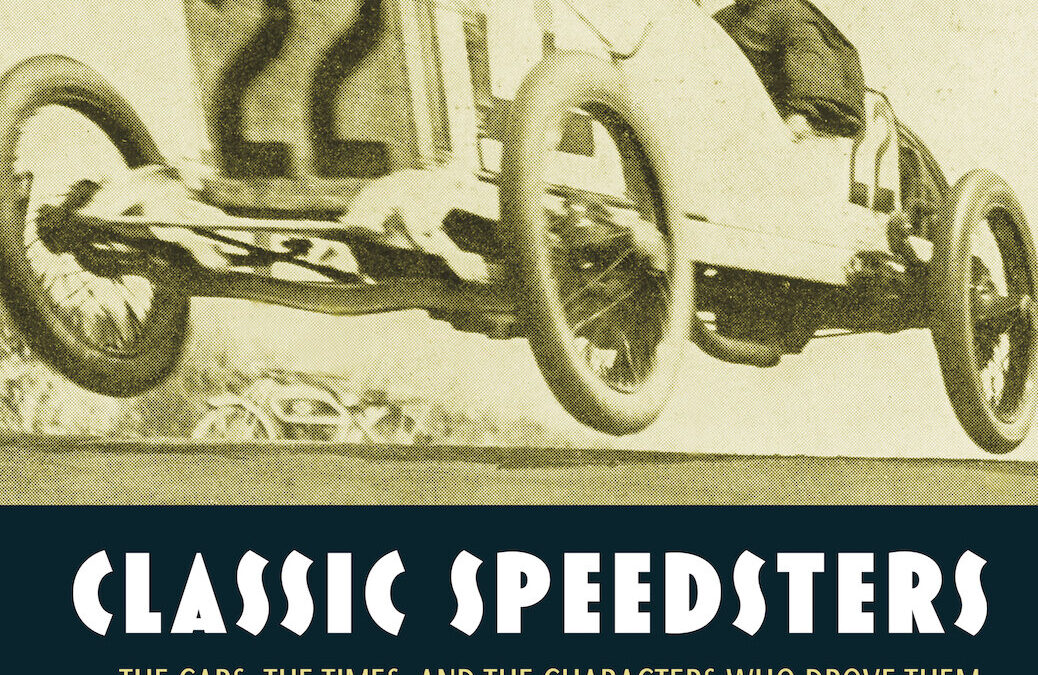
12 Chapters, 12 Car Companies, 12 Famous Owners And a collection of speedsters that will inform and entertain!
Have you ever wondered when and how the hotrod movement started? Or speed and endurance events? Landspeed racing? Hillclimbing? Or anything involving power, speed, or just having some fun in an automobile? This book—Classic Speedsters—covers all of that, and much more.
Classic Speedsters: The Cars, The Times, and The Characters Who Drove Them chronicles the most significant vehicles ever to have traveled American roads and racetracks. Speedsters were the pizzazz cars of their era. Speedsters were owned by entertainers, captains of industry, the wealthy, and in some cases, the everyday guy or gal. They were often expensive, but they were always fast and sexy. Speedsters were America’s first sports cars.
Each chapter frames the birth and evolution of a company that produced a speedster model in its lineup and includes a biography of a famous owner of the period. This book traces the journey of the speedster concept across several time periods, from 1894 to 1970. It examines the speedster’s story among 12 automotive companies, 11 of which were American.
This is the first automotive book to study the speedster concept in depth. A broad swath of speedsters from 12 different manufacturers (actually—there are 13 companies in the book) are examined in order to distill the essence of this singular model.
The companies and the speedsters that they produced are framed within the context of their time to better understand how technology and market forces shaped the success and failure of these companies (and their cars). The people who were drawn to and purchased these vehicles—why did they? This too is examined and discussed.

This book, mainly through images (for the most part unpublished and meticulously captioned), traces the exceptional journey of an endearing man who forged his record thanks to his talent, his perseverance and his combativeness. The book goes off the beaten track by offering a journey through the seventeen countries that Siffert visited to build his career there, thus revealing himself the best ambassador of Switzerland in the same way that Roger Federer does today!
432 pages with 610 pictures, French and English text.
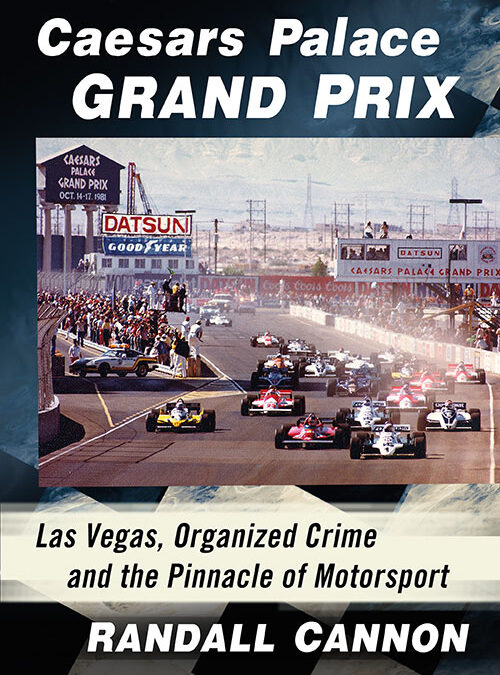
Las Vegas, Organized Crime and the Pinnacle of Motorsport
The path of Grand Prix racing in America wound through raceways at Sebring, Riverside, Watkins Glen, Long Beach, and finally Caesars Palace in Las Vegas. At each stop, the influence of organized crime seemed no more than a handshake away. But at Caesars the vast crime syndicate appeared deeply involved in the operations of the luxury-branded resort. The Caesars Palace Grand Prix then culminated in an unholy alliance of the world capital of gambling, shadowy figures, and the international czar of Formula One.
During its four-year run of successive Formula One and CART IndyCar events, the race hosted the biggest names in motorsport–Mario Andretti, Bernie Ecclestone, Roger Penske, Chris Pook, Alan Jones, Nelson Piquet, Niki Lauda, Danny Sullivan, Bobby Rahal and Al Unser among them. The podium celebration of the inaugural Grand Prix put the convergence of alleged organized crime influences and auto racing on public display, while the years that followed provided their own curiosities. This book traces the intertwined threads through decades of accounts, extensive interviews, and the files of the FBI.
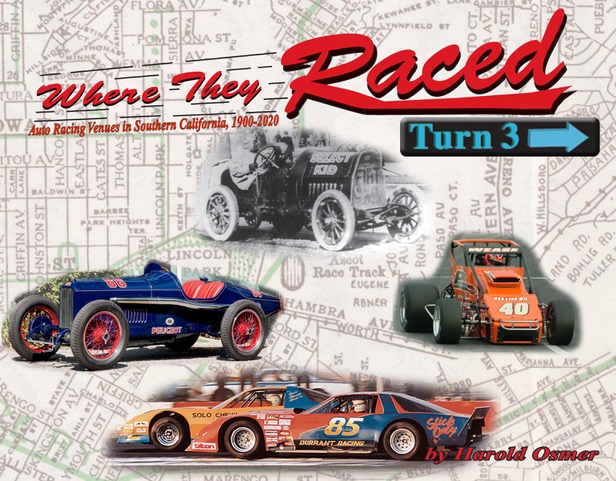
“More auto racing has taken place in Southern California than any other place in the world.”
Where They Raced Turn3 is the long awaited revision of the original classic Where They Raced (out of print since 2012). The history remains unchanged but more images have been uncovered, stories are more detailed, and overall venue coverage is expanded upon.
The first official automotive meet in Southern California took place at Agricultural Park (eventual site of the Los Angeles Coliseum) during Fiesta Week in 1903. This spawned 178 additional auto racing venues ranging from Real Road Races to Board Track Speedways, Short Tracks, Big Ovals, and Drag Strips.
Venues appeared in Santa Monica, Beverly Hills, and on the current sites of Sea World in San Diego and Television City in Los Angeles along with four very different race tracks called “Ascot”(!).
Where They Raced Turn3 traces the rise-fall and rise again of auto racing and its impact on the urban landscape throughout Southern California. This book is less about Who and What raced in favor of the When and (right!) Where they raced. Chances are good that there was an auto racing venue within a few miles of wherever you are in Southern California. Look around, and listen for the echoes of the motors and the cheers from the fans…
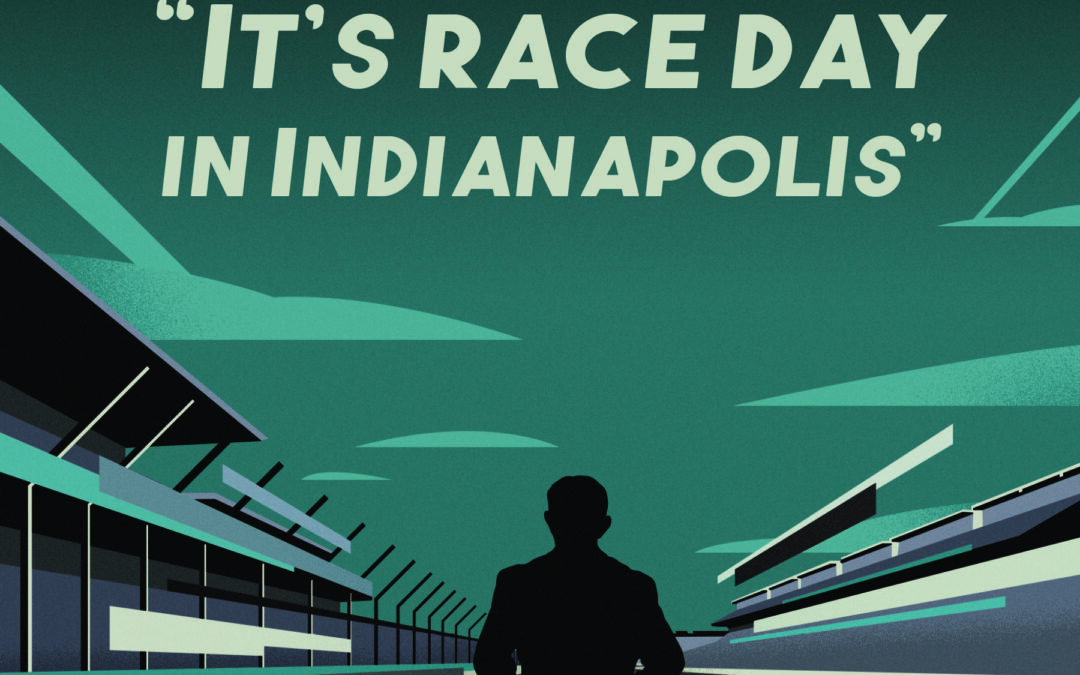
Live from the broadcast booth, Paul Page captured the excitement of 27 Indy 500 races, first as the “Voice of the Indy 500” for the radio broadcast and then as chief announcer for the ABC telecast. From his first race as a pit reporter to his semi-retirement in 2016, generations of fans have witnessed the Greatest Spectacle in Racing as told by Paul Page.
In a life uniquely shaped by the Indy 500, Page fell in love with racing and the Speedway as a teenager, and it became his obsession. After receiving his first press pass in 1965, Page became a fixture in Gasoline Alley, and a trusted friend and confidante to generations of drivers, mechanics and owners.
His rise to fame followed a relentless pursuit of his dream, overcoming many obstacles along the way: dropping out of college, the suicide of his mentor, and recovering from a harrowing helicopter crash. No matter the setback, he used every opportunity to learn the trade of broadcast journalism and the sport of motor racing.
In a career that spanned ABC, NBC, CBS, and ESPN, Page wore a headset for every imaginable race and contest: from Indy cars to drag racers, from the Olympics to the America’s Cup, and from the X-Games to Nathan’s Hot Dog Eating Contest. Page weaves the history, tradition, and lore of the Indianapolis Motor Speedway as he traces across six decades. He introduces the great personalities of the Speedway with many candid moments. He tells great stories from broadcast booths around the world, and slices of life as a young reporter in Indianapolis.
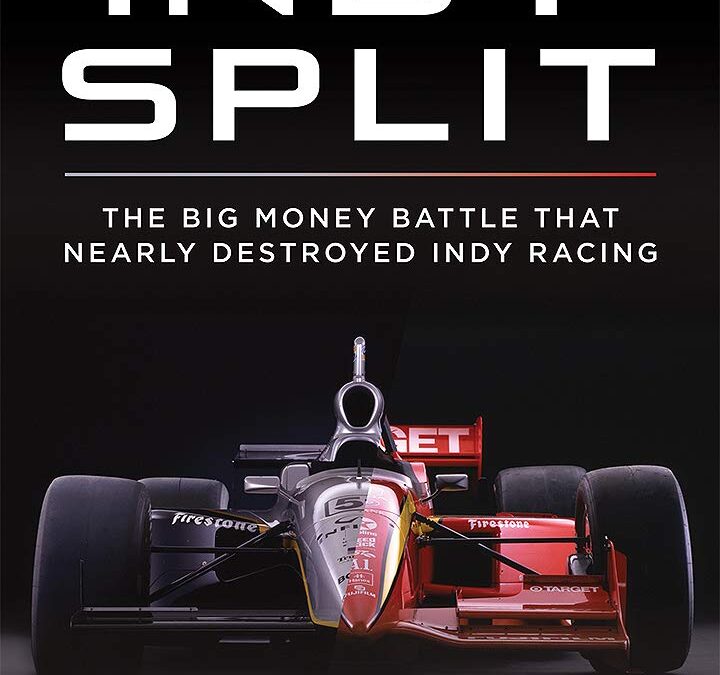
Indy Split is a fascinating, authoritative and overdue account of the big money battle that nearly destroyed the sport of Indy car racing.
In the new book, long-time motorsports reporter John Oreovicz dives deep into the divisive battle between CART and the Indy Racing League. With insightful reporting, Oreovicz recounts the political infighting within the industry which climaxed with a 12-year “Split” from 1996 to 2007 between competing forms of Indy car racing and prevented the sport from achieving its potential.
The book traces the roots of Indy car racing’s dysfunction, which began in 1945 when Tony Hulman rescued the Indianapolis Motor Speedway from potential redevelopment. Over the next 75 years, the Hulman-George family used the stature of the Speedway to carve out a powerful position in American auto racing that sometimes resulted in conflict with Indy car competitors. A volatile period in the late 1970s sparked the formation of Championship Auto Racing Teams (CART), and tensions ramped up even more when Hulman’s grandson, Tony George, assumed power in 1990.
In unprecedented detail, Indy Split uncovers how the Split forced Indy car fans, sponsors, broadcasters and participants to choose sides. The book brings to light the confusion and animosity which caused unnecessary damage to the sport, and covers how negotiations driven by legendary racer Mario Andretti and actor/racer Paul Newman ended the Split in 2008, only to have George to walk away less than three years later. The long struggle for stability was finally resolved in 2020 when Roger Penske acquired IMS and the IndyCar Series, securing a bright future for the Speedway, the Indy 500, and the sport.
Longtime motorsports reporter John Oreovicz began attending the Indianapolis 500 as a teenager in the late ‘70s, allowing him to witness the sport’s growth as an avid fan before documenting its decline as a journalist. With a foreword by Motorsport Hall of Fame inductee Robin Miller, arguably Indy car racing’s most vocal advocate, this is the real story of The Split from one of the sport’s most respected voices
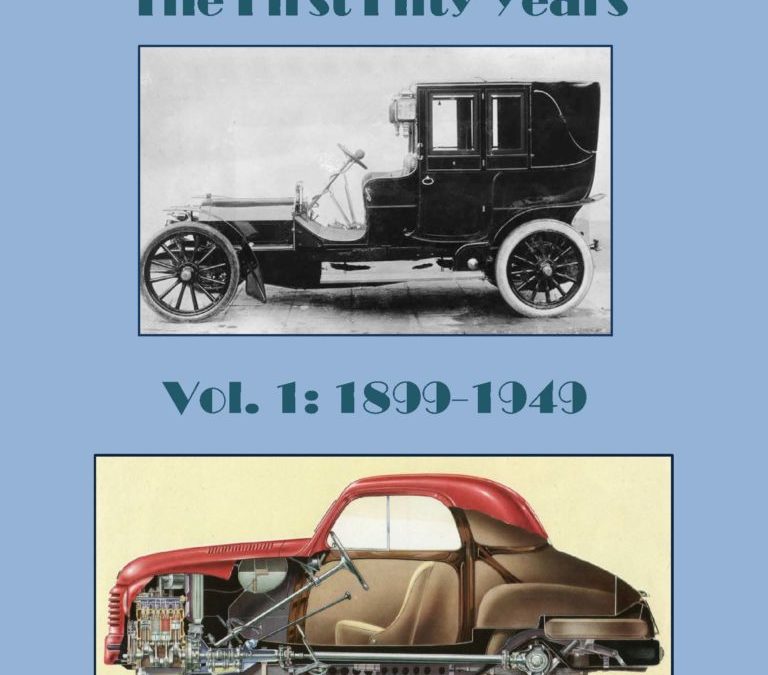
This new book traces the history of the FIAT (Fabbrica Italiana Automobili Torino) company from foundation in 1899, when a group of well-to-do young men decided to found one of the first Italian motorcar manufacturers in Turin, having watched imported French cars putter around and realising their country had no equivalent industry. One of the founders, Giovanni Agnelli, addressed a meeting of fellow-founders on 11th July 1899 thus: “We cannot waste any time. You should have seen what I saw the other day on my trip to Nice. Hannibal is at the gates. In France, even the public sector is starting to use the motorcar.”
Fiat today is a pre-eminent European motor manufacturer producing a wide range of cars to suit every need and budget, cars always cleverly engineered and elegantly styled.
This is volume 1 of 2, a historical survey of 100 years of Fiat cars. The first book covers a fifty year period from 1899-1949, which witnessed the creation of the Fiat businesses and the creation of many innovatively engineered popular cars and trucks as well as aircraft which saw action during two wars.
Competition successes were legion during the period. Fiat attracted brilliant engineers and talented managers, many of whom became legendary names in the annals of motoring history. Without their creative genius, knowledge and skills the company might not have gotten where it is today- bumpy thought the road has been many a time.

On over 400 pages, editor Michael Köckritz, author Jürgen Lewandowski and photographer Michel Zumbrunn get up close and personal with the Ferrari phenomenon: its beauty and sex appeal, its class and power
Readers will learn about not only the most popular models, but also the most important designers who have shaped Ferrari
includes many exciting stories and anecdotes surrounding the legendary brand and its automotive icons
The attractive design by Charles Blunier & Co. and a clean, uncluttered layout ensure the proper presentation worthy of the vehicles from Maranello
Success is not founded on miracles, but is almost always the product of a clear concept—the pinnacle of an ambitious, even stridently innovative idea. However, the aura of Ferrari does indeed approach the miraculous. What lies behind this phenomenon? What is the source of fascination for a brand whose creative designs are internationally recognized and enthusiastically received? First, even today—70 years after the company was founded—the miracle of Ferrari is still due in large part to the personality of Il Commendatore, Enzo Ferrari. Patience, passion, and being hard on himself and those around him gave the brand, under the emblem of the Cavallino Rampante, the power to become what it is today: sheer fascination on four wheels. Second, the long list of international racing victories is equally important. There is no class, no competition, that Ferrari did not set its sights on and win more or less immediately during the company’s last 70 years. Finally, Ferrari is synonymous with aesthetics, elegance, and trend-setting design. The true value of a brand and its products is measured in the currency of impassioned devotion. This is the third and perhaps most vital element confirming the Ferrari miracle: The Ferrari Book – Passion for Design traces the evolution of the miracle and lets us experience passion given automotive form in a large and engrossing format.
|
|
11 2/5 x 14 1/2 in.
416 pp, 157 color ad 24 b/w photographs
Hardcover
Text: German, English, French and Italian |
|

Owner’s Workshop Manual
Much misinformation has been published by those who support, as well as those who are against, the continued deployment of nuclear weapons as instruments of deterrence. This book provides an apolitical description of strategic nuclear weapons, how they are designed, how they work, and how they are assigned to different targets in the event of conflict.
As well as a Workshop Manual, this book would be a guide to public understanding expressed in a dispassionate and factual manner for information which many people find hard or impossible to obtain. Nuclear weapons do exist, and they cannot be wished away, and because of that, an entirely fact-based and balanced account is helpful to those who seek to understand this emotively sensitive subject delivered as a seminal reference.
This book incorporates a balance of cutaway diagrams, images of hardware and test equipment, facilities and delivery systems, and traces the evolution of nuclear weapons over the past 70 years, with the emphasis on strategic nuclear delivery systems today.

Road racing has long-storied roots in North America that reach from coast to coast and to Canada. Some of the greatest drivers to ever compete raced wickedly fast machines, staged epic duels on winding strips of asphalt, and created history. This history left an enduring legacy that is revealed and celebrated in Lost Road Courses. Road racer and road racing expert Martin Rudow retraces road racing’s glorious past and visits the defunct classic road courses across the United States and Canada.
Many road courses were built in the 1950s and 1960s, the golden age of American road racing. These classic road courses built and hosted famous races for Trans-Am, Can-Am, IndyCar, Formula 1, and sports car racing, but did not survive the times. They fell victim to changing times, poor business decisions, urban sprawl, safety standards, and increasing real estate prices. Rudow recounts the breathtaking races and fascinating history of more than 16 tracks from around North America. Riverside International Raceway, Bridgehampton Race Circuit, Ontario Motor Speedway, Continental Divide Raceway, and many others were once major race venues that have since closed. The great race teams, legendary drivers, classic race series that visited the tracks, and cars that turned laps are brought into full focus. The exploits of Chaparral, McLaren, Bud Moore, Lotus, Penske, and other race teams as well as racing greats Mario Andretti, Parnelli Jones, Jim Hall, A. J. Foyt, Al Unser, Jim Clark, and Dan Gurney are covered. Rudow also digs beneath the surface to reveal the story behind the story. The visionaries and businessmen who saw potential and risked capital to build these palaces of speed come back to life. He also recognizes the unsung heroes and regional racers who competed, staffed, and took on various roles at these tracks.
In the pages of this book, a nostalgic tour of these famous races at these vintage road circuits unfolds. Many period photos illustrate the racing action and the tracks themselves in their former glory, and modern color shows the tracks as they currently stand. If you’re a fan of classic sports car, Can-Am, Trans-Am, IndyCar, Formula 1, as well as classic and unique tracks of yesteryear, this book is a must-have.
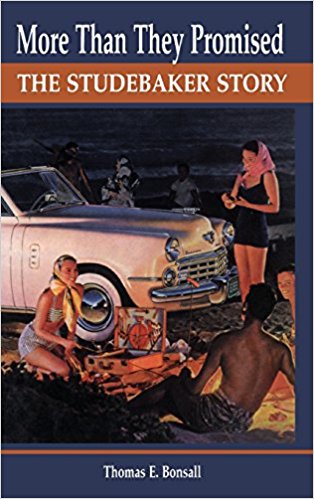
This lavishly illustrated book on the famous automobile manufacturer traces the Studebaker family from its arrival in America in 1736, to the beginnings of the wagon business under John M. Studebaker and his brothers in the nineteenth century, to the family’s entry into the automobile industry in 1902, to the last Studebaker automobile to roll off the assembly line in 1966. The book, however, is much more than the story of a family business; it is also, in microcosm, the story of the industrial development of America. The Studebakers had always been industrialists in the sense that they made their living by manufacturing things, albeit on a small scale. When the Industrial Revolution hit the country with full force, spurred on by the Civil War, it transformed America from a rural-agrarian society into an urban-industrial one. The fortunes of the Studebaker family were transformed with it. As the title suggests, the Studebaker story was mostly one of success. Studebaker wagons and carriages were long noted for their quality and popularity, and so, too, were Studebaker automobiles. The 1953 Starliner and the 1963 Avanti, designed under Raymond Loewy’s direction, are widely regarded as among the most innovative examples of American industrial design. The book deals in detail with the soaring prosperity of the company in the 1920s, the bankruptcy and miraculous recovery in the 1930s, the stupendous success of the early post-World War II period, and the eventual decline of the company’s fortunes in the mid-1950s. It describes the development of such famous models as the Lark, Avanti, and Gran Tourisimo Hawk, with special attention paid to the Avanti II, a surprisingly successful spinoff from the dying company that continued to be produced until 1991. The final chapter, on why Studebaker died, is tightly reasoned and more convincing than previous theories. Throughout, the author has used personal incident and characterization to bring to life the rich, tumultuous history of one of America’s longest enduring industrial empires.
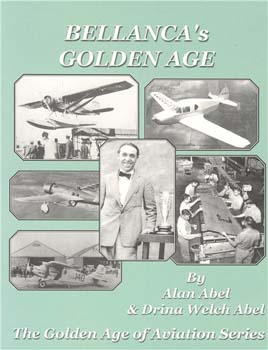
BELLANCA’s GOLDEN AGE is a new book included in The Golden Age of Aviation Series. Book Reviews for The Golden Age of Aviation Series: Smithsonian’s Air & Space: “Archival photos and technical drawings abound.” American Aviation Historical Society: “…details the people, facilities and manufacturing operations.” EAA’s Sport Aviation: “…progressively tells the events and details of these aircraft.” Skyways: “Your new series is a hit of the first order!” SR Batteries: “…just wonderful reading!” General Aviation News: “…books ARE A MUST FOR AVIATION BUFFS.” THE GOLDEN AGE OF AVIATION SERIES is being published to commemorate this year’s 100th Anniversary of Flight (2003), and presents an historical look at Aviation’s Golden Years through detailed and meaty text, numerous original photos, many of which have never been published before now, original magazine advertisements of the era, and internationally acclaimed 3-view Scale Drawings. This new series of books highlights a number of airplane manufacturers during the 1900s through 1950. THE GOLDEN AGE OF AVIATION SERIES takes a look at the respective airplane manufacturer from start-up (and before) through the struggling years of the Great Depression through the end of World War II and beyond to the postwar boom/bust. This series is a compilation featuring the combined research and writings of Drina Welch Abel, Alan Abel, and the late Paul Matt. The 3-view scale drawings used in our Golden Age books have been reviewed, acclaimed and praised by the aviation press in every continent of the world! BELLANCA’s GOLDEN AGE Traces G.M. Bellanca coming from Sicily to America as a teenager in 1911 through his 42 years of continuous airplane manufacturing operations. He did more for aviation than any other single individual during aviation’s first 100 years, bar none! This is the ONLY BOOK that has ever captured Bellanca’s complete and lengthy story. Details the beginnings of the air transportation system over great distances. Details the first ten flights over the Atlantic and the first flight over the Pacific. Tells never-before-told stories of Charles Lindbergh, Clarence Chamberlin and many other Golden Age personalities. Tells the complete story of the greatest airplane of the 1920s — Bellanca’s Columbia (the plane Lindbergh wanted but didn’t get). In the 1930s the government tested 209 different airplanes and found that Bellanca’s was the best regarding “efficiency.” Details Bellanca airplanes: CD, CE, CF, Wright-Bellanca 1, WB-2, Columbia, Bellanca J, TES Tandem, Pacemaker, Special J-300, Model K, Airbus/Aircruiser, C-27A, Miss Veedol, The White Falcon, Senior Skyrocket, The Flash, XSE-1, XSE-2, Bellanca Racer, Cruisair Junior, YO-50 (liaison), AT-21-BL Trainer, Cruisair Senior, Cruisemaster.

This book traces the history of Sikorsky aviation and its founder, Igor I. Sikorsky, one of the most talented and versatile aeronautical pioneers in history. Sikorsky’s aviation career spanned over 60 years and was highlighted by three major achievements: the creation of the world’s first four-engine airliner; the record-breaking Clipper Ships, with which Pan American Airways explored transpacific and transatlantic airline service; and the development of the helicopter. Sikorsky then led his engineers out of the piston-engine era and into the jet age with the design and development of some of the most widely used turbine-powered helicopters in aviation history. More than 200 photographs, many from the Sikorsky family archives, document the genius of Sikorsky’s intuitive engineering and his lifelong interest in the challenge of the helicopter, which many historians consider to be his crowning achievement.






















